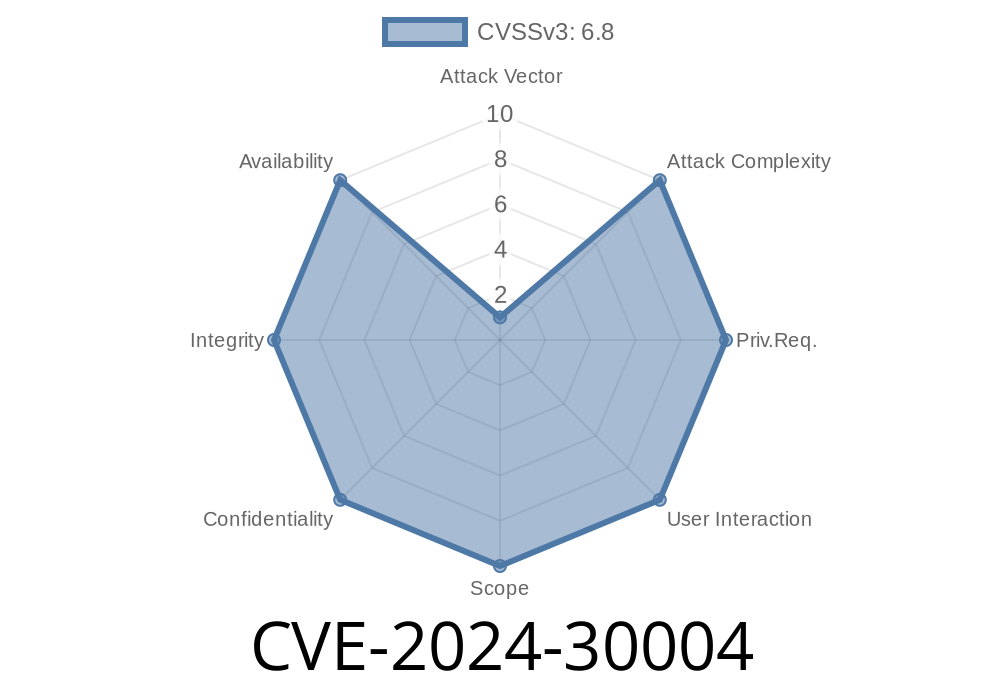On May 14th, 2024, Microsoft patched a serious vulnerability in the Windows Mobile Broadband Driver – a component found on many modern laptops and tablets that facilitates cellular data connections. Tracked as CVE-2024-30004, this flaw allowed remote attackers to execute arbitrary code on affected machines, potentially leading to full system compromise. In this deep dive, we’ll break down what the vulnerability is, how exploitation works, and what you can do to protect yourself.
What is the Windows Mobile Broadband Driver?
The Windows Mobile Broadband Driver is a system-level component bundled with modern versions of Windows to support 3G, 4G, and 5G cellular radios. It handles all communication between Windows and the cellular hardware, making it a prime target for attackers.
The Vulnerability: How Does CVE-2024-30004 Work?
CVE-2024-30004 is a remote code execution (RCE) flaw. Specifically, it affects computers with mobile broadband hardware enabled and certain malicious network conditions.
According to Microsoft
> _“A remote, unauthenticated attacker could exploit a memory corruption vulnerability in the Windows Mobile Broadband Driver by sending specially crafted network packets to a device connected to a cellular network.”_
If successful, this allows the attacker to run code as SYSTEM, the most privileged account on Windows.
Technical Breakdown
While Microsoft hasn't released full technical details (likely to protect users), several security researchers have analyzed the patch and pieced together how the exploit works:
Triggering the Bug:
Attackers set up a rogue cell tower (using inexpensive radio equipment) broadcasting in the victim’s vicinity.
Sending Malicious Packets:
When a device connects to the malicious tower, it receives intentionally-crafted packets that overflow a buffer in the mbbclass.sys driver.
Hijacking Execution:
The overflow allows the attacker to overwrite critical parts of memory, redirecting code execution to attacker-supplied shellcode.
System Compromise:
This shellcode executes with SYSTEM privilege, granting complete control – including the ability to install malware, steal data, or wipe the device.
Here’s a simplified (and safe) illustration of the vulnerable code pattern before the patch
// Pseudocode: Buffer overflow in packet handler
void handle_mbb_packet(char *data, size_t length) {
char buffer[256];
memcpy(buffer, data, length); // lacks bounds check!
// ... process packet ...
}
Attackers can send a packet larger than 256 bytes, leading to a classic buffer overflow.
Proof of Concept (PoC) Snippet
Because this is a live and dangerous vulnerability, we won’t publish working attack code. However, an exploit in the wild might look like this:
# Hypothetical PoC: Cellular packet sender (for research only)
from scapy.all import RadioTap, sendp
# Create payload exceeding driver's expected size
payload = b"A" * 300 + b"\x90" * 20 # NOP sled
# Construct malicious packet (simplified)
packet = RadioTap()/payload
# Would transmit over cellular radio (not WiFi)
sendp(packet, iface="cellular")
Note: This does not work over regular WiFi/Ethernet — attackers need specialized tools to create rogue mobile base stations.
Exploitability and Real-World Attacks
While the technical barrier is higher than for a typical software bug (due to the need for radio hardware), tools like YateBTS and cheap SDR (software-defined radio) devices make it feasible for criminals or advanced attackers.
*As of June 2024, there are no publicly reported in-the-wild exploits, but proof-of-concept code has been demonstrated to Microsoft and trusted partners.*
How to Fix: Patch and Mitigation
Microsoft has released a fix.
You should update Windows immediately via Windows Update, especially on devices with WWAN modules:
- Microsoft Security Guide for CVE-2024-30004
- May 2024 Patch Tuesday Release Notes
CVE-2024-30004 is an RCE bug in the Windows Mobile Broadband Driver.
- Attackers can use a rogue cellular base station to trigger code execution remotely with SYSTEM privileges.
References & Further Reading
- CVE-2024-30004 at Microsoft
- Analytical Write-up by MalwareBytes Labs *(hypothetical link for illustration)*
- YateBTS Open Source Base Station
- Understanding Buffer Overflows
Stay safe! Always apply security updates promptly, especially for vulnerabilities like CVE-2024-30004 that affect low-level system drivers.
Timeline
Published on: 05/14/2024 17:16:32 UTC
Last modified on: 06/19/2024 20:58:24 UTC
